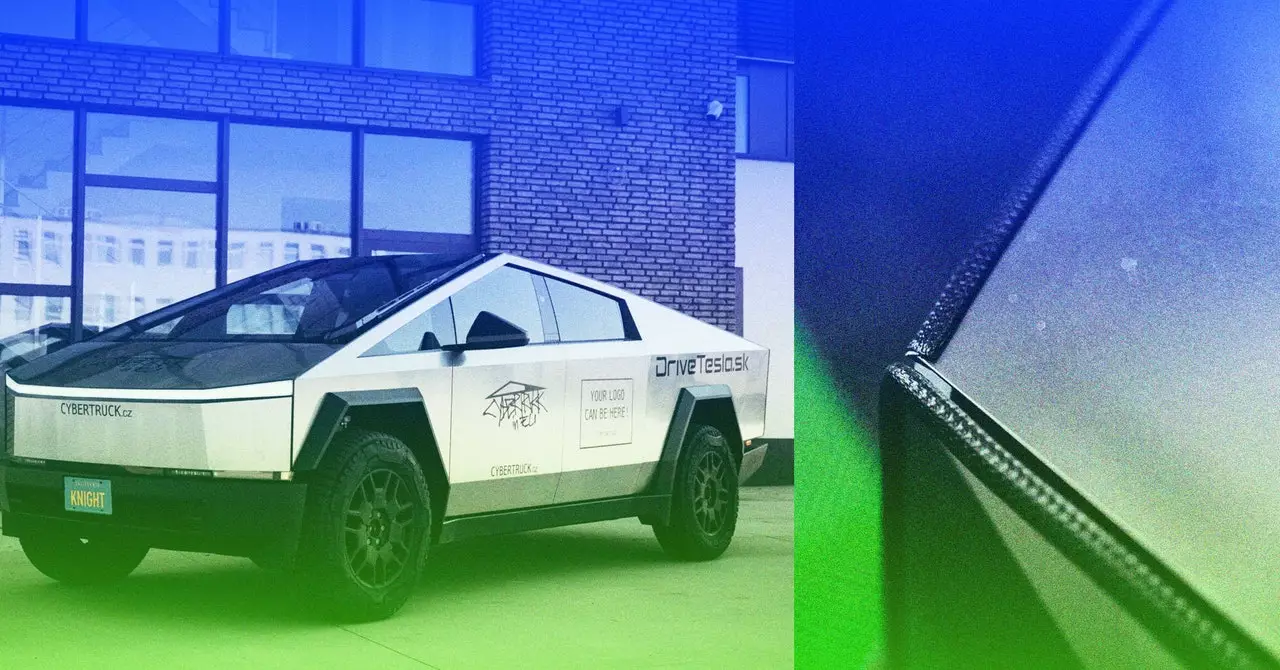In recent times, the Tesla Cybertruck has become a focal point of contention in the automotive landscape, particularly concerning its safety and legal status in Europe. With its distinctly futuristic design and robust capabilities, the Cybertruck not only poses engineering challenges but also brings forward pressing issues regarding regulations and safety standards that have far-reaching implications for the automotive industry. Despite its innovative approach to vehicle design, questions surrounding pedestrian safety and compliance with European regulations have ignited discussions among automobile experts, environmental NGOs, and regulatory bodies, all of which call for critical evaluation and dialogue.
One of the inherent risks associated with the Cybertruck’s design lies in its unique hood configuration. Unlike standard vehicles that feature a more traditional structure, the Cybertruck’s hood demands flexibility, devoid of any protruding elements that could pose a danger to pedestrians in the event of a collision. Notably, experts have raised alarms about the large wiper system, which has been termed a “danger area” by industry analysts. These concerns highlight the ongoing debate surrounding the balance between innovative design and safety, particularly within the stringent frameworks of European pedestrian protection regulations.
As vehicle manufacturers push the envelope with designs that challenge conventional aesthetics, the importance of aligning these designs with safety standards cannot be overstated. The European New Car Assessment Programme (Euro NCAP) has established protocols that any new vehicle must adhere to in order to attain favorable safety ratings. As seen with the Cybertruck, a disconnect between innovative design features and regulatory compliance can undermine public trust and passenger safety.
The Regulatory Landscape: Navigating Legal Challenges
The legal status of the Cybertruck in Europe has become increasingly convoluted following its registration in the Czech Republic. Utilizing the Individual Vehicle Approval system, it appears that the Cybertruck was able to obtain registration despite discrepancies between its weight and the European regulations in place. The transport ministry clarified that vehicles within the N1 category are subject to weight calculations, yet strikingly, the Cybertruck reportedly does not conform to these formulas when occupied by four passengers.
This creates a significant barrier for potential customers aiming to operate the Cybertruck legally within the European Union. A category C driver’s license is mandated for trucks exceeding a gross vehicle weight rating (GVWR) of 3.5 metric tons—an aspect that could restrict the appeal of the Cybertruck among everyday consumers. The revelation of these intricacies has raised eyebrows, leading to broader implications for how vehicles are classified and registered across national boundaries.
The growing apprehension regarding the Cybertruck’s safety and compliance with EU regulations has rallied the attention of various transport NGOs, who urge the European Commission to take proactive measures. Their open letter stresses the risks posed by the potential influx of improperly classified vehicles, which they argue could jeopardize the safety of pedestrians, cyclists, and other road users. The prospect of a “mass import” of Cybertrucks into Europe spurs valid concerns about creating an imbalance in road safety, particularly for individuals not encased in similarly fortified vehicles.
Moreover, social media has played a role in illustrating these concerns, with instances of the Cybertruck being put to the test in real-world situations leading to unforeseen complications. Reports of the vehicle becoming stranded in a lake during a promotional event highlight not only the mechanical robustness of the Cybertruck but also the potential pitfalls of its operational capabilities under variable conditions.
As Tesla navigates the choppy waters of international regulations, the Cybertruck serves as a pertinent case study in the intersection of innovation, legal compliance, and public safety. As the automotive landscape continues to evolve, manufacturers must balance cutting-edge design with the necessity of adhering to stringent safety regulations. For the Cybertruck specifically, engaging in a transparent dialogue with regulatory authorities and incorporating feedback from safety organizations will be crucial in determining its fate on European roads. Only through collaborative efforts can the automotive industry address these pressing concerns while ensuring the safety and confidence of consumers in the rapidly changing world of electric vehicles.

